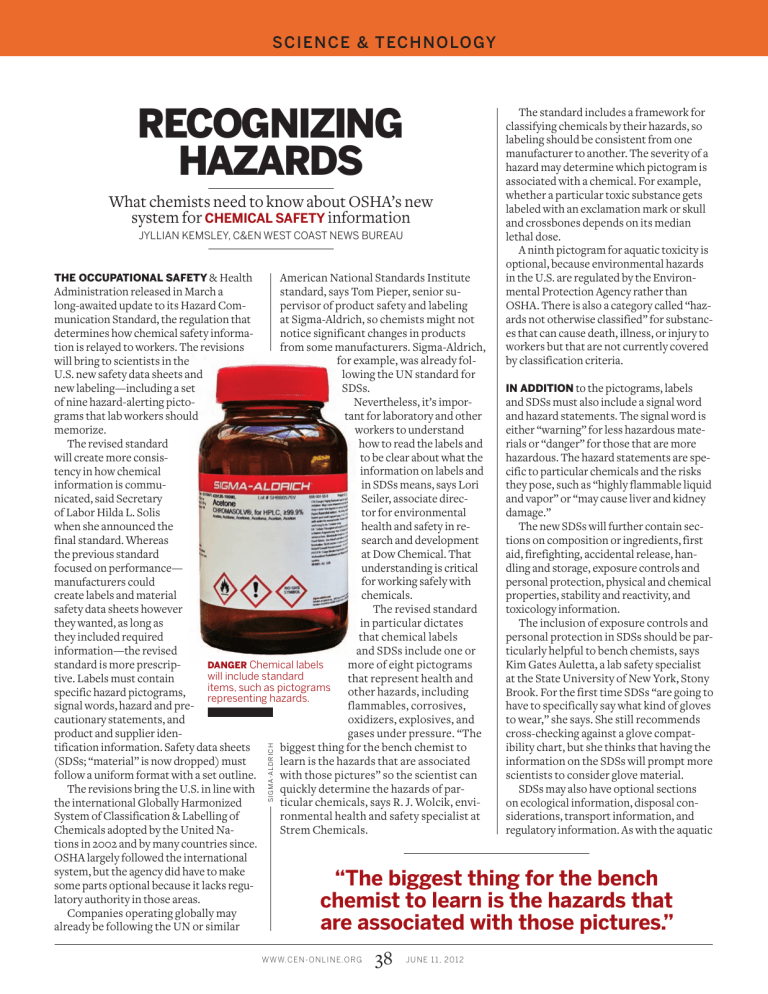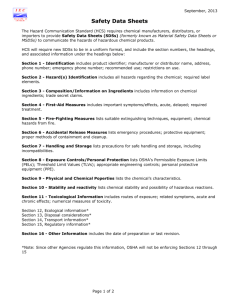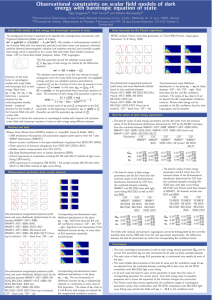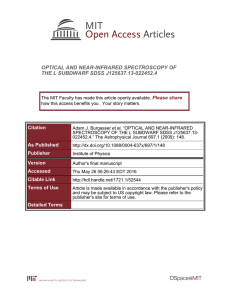recognizing hazards - Chemical & Engineering News
advertisement

SC IENCE & TECHNOLOGY RECOGNIZING HAZARDS What chemists need to know about OSHA’s new system for CHEMICAL SAFETY information JYLLIAN KEMSLEY, C&EN WEST COAST NEWS BUREAU SIGMA-ALDRICH American National Standards Institute THE OCCUPATIONAL SAFETY & Health standard, says Tom Pieper, senior suAdministration released in March a pervisor of product safety and labeling long-awaited update to its Hazard Comat Sigma-Aldrich, so chemists might not munication Standard, the regulation that notice significant changes in products determines how chemical safety informafrom some manufacturers. Sigma-Aldrich, tion is relayed to workers. The revisions for example, was already folwill bring to scientists in the lowing the UN standard for U.S. new safety data sheets and SDSs. new labeling—including a set Nevertheless, it’s imporof nine hazard-alerting pictotant for laboratory and other grams that lab workers should workers to understand memorize. how to read the labels and The revised standard to be clear about what the will create more consisinformation on labels and tency in how chemical in SDSs means, says Lori information is commuSeiler, associate direcnicated, said Secretary tor for environmental of Labor Hilda L. Solis health and safety in rewhen she announced the search and development final standard. Whereas at Dow Chemical. That the previous standard understanding is critical focused on performance— for working safely with manufacturers could chemicals. create labels and material The revised standard safety data sheets however in particular dictates they wanted, as long as that chemical labels they included required and SDSs include one or information—the revised more of eight pictograms standard is more prescripDANGER Chemical labels will include standard that represent health and tive. Labels must contain items, such as pictograms other hazards, including specific hazard pictograms, representing hazards. flammables, corrosives, signal words, hazard and preoxidizers, explosives, and cautionary statements, and gases under pressure. “The product and supplier idenbiggest thing for the bench chemist to tification information. Safety data sheets learn is the hazards that are associated (SDSs; “material” is now dropped) must with those pictures” so the scientist can follow a uniform format with a set outline. quickly determine the hazards of parThe revisions bring the U.S. in line with ticular chemicals, says R. J. Wolcik, envithe international Globally Harmonized ronmental health and safety specialist at System of Classification & Labelling of Strem Chemicals. Chemicals adopted by the United Nations in 2002 and by many countries since. OSHA largely followed the international system, but the agency did have to make some parts optional because it lacks regulatory authority in those areas. Companies operating globally may already be following the UN or similar The standard includes a framework for classifying chemicals by their hazards, so labeling should be consistent from one manufacturer to another. The severity of a hazard may determine which pictogram is associated with a chemical. For example, whether a particular toxic substance gets labeled with an exclamation mark or skull and crossbones depends on its median lethal dose. A ninth pictogram for aquatic toxicity is optional, because environmental hazards in the U.S. are regulated by the Environmental Protection Agency rather than OSHA. There is also a category called “hazards not otherwise classified” for substances that can cause death, illness, or injury to workers but that are not currently covered by classification criteria. IN ADDITION to the pictograms, labels and SDSs must also include a signal word and hazard statements. The signal word is either “warning” for less hazardous materials or “danger” for those that are more hazardous. The hazard statements are specific to particular chemicals and the risks they pose, such as “highly flammable liquid and vapor” or “may cause liver and kidney damage.” The new SDSs will further contain sections on composition or ingredients, first aid, firefighting, accidental release, handling and storage, exposure controls and personal protection, physical and chemical properties, stability and reactivity, and toxicology information. The inclusion of exposure controls and personal protection in SDSs should be particularly helpful to bench chemists, says Kim Gates Auletta, a lab safety specialist at the State University of New York, Stony Brook. For the first time SDSs “are going to have to specifically say what kind of gloves to wear,” she says. She still recommends cross-checking against a glove compatibility chart, but she thinks that having the information on the SDSs will prompt more scientists to consider glove material. SDSs may also have optional sections on ecological information, disposal considerations, transport information, and regulatory information. As with the aquatic “The biggest thing for the bench chemist to learn is the hazards that are associated with those pictures.” WWW.CEN-ONLIN E .ORG 38 J UNE 1 1 , 20 12 QUICK LOOK New safety labels use pictograms that are designed for rapid recognition. SOURCE: OSHA ◾◾ Carcinogen ◾◾ Mutagen ◾◾ Reproductive toxin ◾◾ Respiratory sensitizer ◾◾ Toxic to target organs ◾◾ Toxic if aspirated ◾◾ Burns skin ◾◾ Damages eyes ◾◾ Corrosive to metals ◾◾ Explosive ◾◾ Self-reactive ◾◾ Organic peroxide ◾◾ Gas under pressure ◾◾ Toxic to aquatic life ◾◾ Acutely toxic (harmful) ◾◾ Irritant to skin, eyes, or ◾◾ Acutely toxic (severe) ◾◾ Flammable ◾◾ Self-reactive ◾◾ Pyrophoric ◾◾ Self-heating ◾◾ Emits flammable gas ◾◾ Organic peroxide ◾◾ Oxidizer respiratory tract ◾◾ Skin sensitizer toxicity pictogram, these sections are not required because they are beyond OSHA’s regulatory purview, but companies including them to conform to regulations in other countries won’t need to delete them for the U.S. ONE POTENTIAL POINT of confusion about the new hazard classes is that different types of hazards will be ranked by severity, starting with “1” as the most hazardous. But not all classes have the same number of ranking levels. Oxidizing gases are all categorized as “1,” for example, whereas flammable liquids are ranked into four categories, depending on their flash points. And the severities cannot be compared between hazard classes—one class’s category “1” is not necessarily more dangerous than another’s category “2,” Gates Auletta notes. The order of rankings is also the reverse of those used on U.S. National Fire Protection Association diamonds, which use (optional) “0” for least and “4” for most hazardous. Overall, the revised hazard communication standard will give chemical users “more complex but better, more thorough information,” says George Bleazard, Sigma-Aldrich’s corporate director of environmental health and safety, transportation compliance, and product safety. It is important for chemists and other employees to understand the new system and take advantage of that information for everyone’s safety ◾ The Powerhouse for API Solutions F.I.S. – Fabbrica Italiana Sintetici S.p.A. Viale Milano, 26 - 36075 Montecchio Maggiore (Vicenza) - Italy WWW.CEN-ONLIN E .ORG 39 J UNE 1 1 , 20 12 www.fisvi.com










